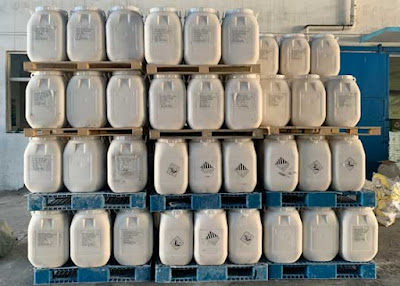The main uses and benefits of Sodium Dichloroisocyanurate Dihydrate
Sodium dichloroisocyanurate dihydrate is in commercial use, something the average user doesn't even know about, but given its antibacterial properties and a few others, you should know how it can help your business. This article explains what the chemical really is and what its benefits are, and some of its commercial uses.
What is Sodium Dichloroisocyanurate Dihydrate
Represented as C3Cl2N3NaO3.2H2O or SDIC dihydrate chemical, it is a chemical compound that is widely used as a sterilant. White in color, it is classified as a biocide or disinfectant. Sodium, chlorine, nitrogen, hydrogen and oxygen are the components of this compound. SDIC.2H20 is also known by other names such as 1,3,5 triazine 2,4,6 (1H, 3H, 5H) trione, sodium dichlorotriazine trione dihydrate, 1,3 dichloro, sodium salt, dihydrate, dichloroisocyanuric acid sodium salt dihydrate, but they refer all on the same thing.
But SDIC.2H2O is often confused with sodium dichloroisocyanurate, which lacks both water molecules. The difference between the two is that SDIC.2H2O is more efficient with low toxicity. That is its main advantage. Due to the low toxicity, there is a lower risk for children or those with skin irritation.
Applications
SDIC.2H2O is used in different industries for a variety of reasons. Here are some of the most common ones:
In swimming pools and water parks, SDIC 2H2O is an auxiliary and disinfectant, which means it can easily separate the solute and disinfect it at the same time. Hence, pools and water parks use dust to keep their water clean and safe. Powder is a better alternative to other options because the chlorine it contains is a much more stable form. There is also a high proportion of free chlorine. This means that less SDIC.2H2O is needed to clean swimming pools.
In water purification, sodium dichloroisocyanurate dihydrate is also used in water treatment plants to purify water. With further processing, the water can be used for drinking water treatment. In a toxicological review, SDIC.2H2O was found to be less toxic, genotoxic or carcinogenic. It was treated with sodium cyanurate. Any intact sodium dichloroisocyanurate residue remaining in the mixture would convert to cyanuric acid on contact with drinking water. This is carcinogenic. But there was no trace of it, so it is safe. SDIC.2H2O was considered safe.
In agriculture, farmers use powders to prevent fungal infections. The high supply of chlorine prevents the growth of any kind of fungus and its low toxicity levels ensure the safety of food. It is also used in the aquaculture industry to protect fish and shrimp. The powder is also good for disinfecting silkworm cocoons.
In medical technology. Troclose sodium dihydrate is regularly used in medical technology to disinfect rooms and floors. made of this dust. SDIC.2H2O brought the salvation to epidemic prevention.In power plants and factories you need a regular cleaning to create a safe atmosphere for work and mass production. When purchasing the powder, it is important to order it from a reputable chemical supplier.



Comments
Post a Comment